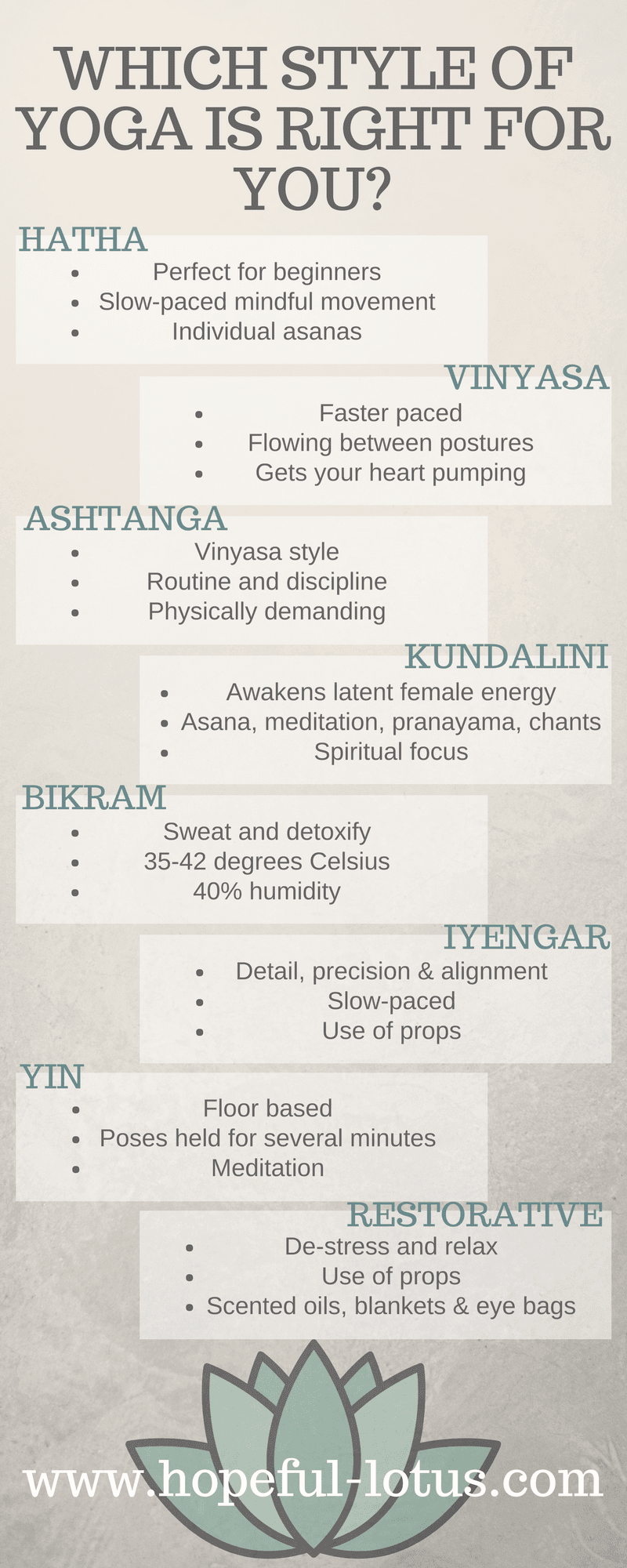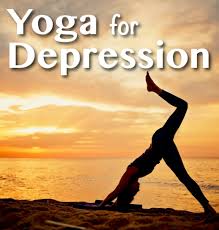
Whether you're just starting to explore the world of yoga or have been practicing for years, it's important to understand how to Bikram yoga define. In the end, you'll want to know exactly what it is before you begin. It's not a standard yoga class. Its focus is on locking the knee rather than straightening the leg or pressing the kneecap backwards. Hyperextension can occur in the knee joint.
Bikram yoga has a unique practice that is more intense and challenging than many other forms. Although the heat is intended to aid your body in releasing toxins and increasing flexibility, it is also more intense that other forms of yoga. If you're not used to practicing in the heat, you should first talk to your doctor. This type of yoga should not be attempted if you have any medical conditions.

Bikram Yoga also uses a sauna to recreate the Indian heat. Heat and humidity help to loosen muscles and increase range of motion when performing poses. Sweating also helps flush toxins and cleanse the body. In a hot space, practitioners can increase their heart rate, which improves circulation. This can increase the energy levels of the body and promote a healthier life. Bikram yoga has many benefits.
Some people claim that Bikram yoga can help reduce the signs of aging and increase flexibility. Others assert that it can improve immunity, boost immune system, and give an overall feeling of well-being. There are many problems with this practice. Some practitioners claim that this can cause back pain, sharper thoughts, and lower blood pressure. These benefits sound great, but there aren't any studies that support them.
Bikram Yoga teachers sometimes use the 80-20 method. This is a type of breathing in which one exhales 80 percent of air through the nose and holds it for the remainder of the session. It is more challenging than other types, but it is also more efficient. As you can see, it is a form of yoga that can improve the mental and physical state of a person. It is an excellent form of yoga and a great way for people to lose weight.

Although most people find this yoga style safe, there are still some potential risks. You need to drink enough water prior and after class. Bikram yoga can also cause overstretching or sprains. The hot yoga classes are a great way to exercise safely, but it's important to know the risks associated with the practice.
FAQ
What does milk do?
Next time you buy milk think about what you could do with it. You may also benefit from consuming less coffee.
Children and adults both have found milk to be beneficial. Milk provides children with nutrients such as vitamin D, calcium, potassium, phosphorous, and magnesium.
It aids in digestion, strengthens bones, and promotes weight loss. People who consume dairy products have lower rates of illness and better immune systems.
Milk is also rich in lactose, so people who cannot digest this sugar easily can enjoy its benefits without experiencing stomach problems.
Drink more milk than soda and juice. You can strengthen your teeth with the extra calcium and vitaminD found in milk.
Plain low-fat milk can be used to make yogurt if you don’t like the taste. Yogurt is a great alternative to milk since it is lower in calories and higher in protein.
Yogurt also contains probiotics which improve digestion and immunity.
If you're having trouble sleeping, try taking a glass of warm milk before bedtime. Warm milk relaxes muscles, increases serotonin levels and helps you get a good night of sleep.
What is a good 7-day workout schedule?
A seven-day exercise program should consist of three days per week of cardiovascular training (running, biking, swimming), two strength exercises (using free weights, weight machines), and one flexibility/core workout (yoga, Pilates). It's essential to do each activity at least once a week. Each session should last no more than 45 minutes.
Cardiovascular Exercises: Running, biking, swimming
The goal is to get in at least 60 minutes of cardio activities per week. Aim for 75 minutes per week to get the best results. Cardio exercises can be used to increase blood flow, stimulate muscle growth, and improve blood circulation.
Strength Training
Cardio exercises work on the heart and lungs. Strength training works on the muscles and bones. Strength training builds lean muscle mass, which helps burn calories even when resting.
Flexibility and core workouts
You can strengthen your entire body by strengthening flexibility and core exercises. Both yoga and Pilates can be great choices.
Why Metabolic Well-being is the Key to Aging Well
Today's people live longer than ever before. They are also becoming more sick as a result. Even though we have made significant advances in medical science it is becoming clearer that our current approach doesn't work.
We need to change how we think about health and aging. To achieve healthy aging, we must look at metabolic health as more than just weight loss. It is also important to consider overall wellness.
Your metabolism must be strong and healthy to ensure you live an active lifestyle for many years to come.
There are many methods to improve your metabolic state. One of those ways is to incorporate these 7 foods into your diet:
-
Blueberries contain resveratrol, which has been shown to help support cellular longevity. They also contain vitamins C & E, as well as antioxidants.
-
Pinto beans and lentils are great sources of fiber and plant-based proteins. These nutrients help maintain blood sugar levels so they don’t spike and fall.
-
Broccoli is rich in sulforaphane. Studies have shown that it protects cells from DNA damage. It may even slow down the progress of cancer.
-
Chia seeds are rich in fiber and omega-3 fatty acid. They are high in protein and antioxidants. These nutrients promote gut health, brain function and heart health.
-
Green tea contains catechins, which are polyphenols. Studies show that catechins in green Tea can reduce the risk of developing diabetes, stroke, cognitive decline, and bone fractures.
-
Salmonis high in protein and rich in vitamin D is one of the most popular sources of lean proteins.
-
Walnuts contain omega-3s and antioxidants like alpha lipoic acid (ALA). ALA boosts energy production and reduces inflammation.
What foods should I avoid when trying lose weight?
Avoid trans fats. Trans fats can raise LDL (the unhealthy) cholesterol levels while lowering HDL levels (the good).
Trans fats can be found in fast food, deep-fried foods, packaged baked goods, snack cake, and other processed foods.
These unhealthy fats also contribute to inflammation, leading ultimately to heart disease or diabetes.
Artificial sweeteners are also to be avoided. Artificial sweeteners may increase your chance of getting cancer.
These chemicals are used in everything from soft drinks to chewing gum to candy bars. They are also found in poultry, eggs, meat and fish.
Artificial sweeteners include saccharin.
The American Heart Association advises against using these chemicals, as they could damage DNA.
Statistics
- 10 pounds in a month is likely during a lean bulking phase, especially for beginners. (muscleandstrength.com)
- The PRS enabled risk stratification for overall prostate cancer and lethal disease with a four-fold difference between men in the highest and lowest quartiles (HR, 4.32; 95% confidence interval [CI], 3.16-5.89). (pubmed.ncbi.nlm.nih.gov)
- An estimated calorie range for moderately active adult males falls between 2,200 to 2,800 calories per day, depending on age. (eatright.org)
- Candidates and applicants must pass all four tests at 70% (minimum level) to graduate from Basic Deputy U.S. Marshal (BDUSM) Training. (usmarshals.gov)
- Get free shipping and 25% off today. (healthline.com)
External Links
How To
How do I lose fat by exercising?
Exercise can help you burn calories and increase your metabolism.
At moderate intensity, you will lose weight easily.
These tips can help you to burn fat while training:
-
Do cardio exercises such as walking, swimming, jogging, cycling, running, or elliptical training.
-
Do 30 minutes of exercise three times a week.
-
Strength training is a great way to lose weight.
-
Avoid intense workouts. You can build muscle without breaking down muscle tissue.
-
Keep hydrated during exercise. Water helps flush out toxins and keep your body properly hydrated.
-
After working out, make sure to drink low-fat proteins shakes. Protein shakes can help boost energy and repair muscles.
-
Smaller meals are better for you.
-
Don't skip breakfast! Skipping breakfast can leave you feeling tired and sluggish.
-
Take care of your mind. Stressful situations may slow down your metabolism.
-
Keep a positive attitude. Studies show that people who believe they're overweight gain more weight than those who think they look pleasing.
-
Get enough sleep. Insufficient sleep can make it more difficult to lose weight.
-
Stay active. Keep moving every hour.
-
Maintain a healthy diet. Healthy eating will keep you fuller and more satisfied for longer.
-
Find ways to relax. A tense mind doesn't allow your body to release stress hormones that break down muscle tissue.
A balanced diet includes all essential nutrients needed for growth and development.
Instead of eating three large meals a day, eat six smaller meals every day. This allows your body time to digest what you've eaten.
For strong bones, we need 500 mgs of calcium daily. Calcium can be found as a dairy product such as milk, yogurt and fortified soy drinks, orange juices, cereals, breads, and cereals.
Calcium is found in leafy green vegetables and beans, tofu as well as nuts, seeds, cheese, and seeds.
Vitamin D is required for calcium absorption. Vitamin D can be found in egg yolk, fatty fish, and other fortified foods.
Vitamin E is crucial for skin health. Vitamin E can be found in vegetable oils as well as wheat germ oil, peanuts and almonds.
Zinc is essential for healthy immunity and wound healing. Zinc is found in oysters, legumes, meats, whole grains, and seafood.
Zinc deficiency can cause fatigue and loss of appetite. It can also lead to depression and impaired immunity.
Consuming too much sugar can cause insulin resistance. This causes an increase in blood glucose levels. Insulin resistance can lead to weight gain.
Insulin resistance develops when there are high levels of free radicals in the bloodstream. Free radicals are molecules that have unpaired electrons, which can cause damage to cell membranes or other parts of your body.
Most free radicals come from pesticides herbicides, food additives, preservatives smoking, radiation, chemical in cosmetics, lotions and household cleaning supplies.
Free radical damage can lead cancer, heart disease or diabetes, arthritis, asthma, or other forms of aging.
The best way to avoid free radicals is to eat a balanced diet high in antioxidants. Antioxidants protect against oxidative damage.
Vitamin C (found on citrus fruits), Beta carotene, found in carrots and sweet potatoes, spinach and broccoli, cantaloupe (found in tomatoes, mangoes and peppers), and Vitamin E (found nuts, olive oil and avocados).
Selenium, copper as well as manganese and zinc are some other antioxidant nutrients.
Selenium helps protect cells from oxidative damage caused by free radicals. Selenium may be found in Brazil nuts as well tuna, liver and kidneys. It can also be found on shrimp, cod, turkey, beef lamb, pork, chicken, and other foods.
Copper protects the brain and eyes as well as the lungs and red blood cells. Copper can be found in shellfish and poultry as well as meat and organ meats.
Manganese, an essential component of bone strength, is crucial. Manganese may be found in brown rice or spinach, bananas and prunes as well raisins, oatmeal and lentils.
Zinc is necessary for average growth, reproduction, and wound healing. Zn is found in lean meats, poultry, white fish and eggs.